
Nishihara is a town located in Nakagami District, Okinawa Prefecture, Japan. In the Okinawan language, nishi means "north", as Nishihara was north of the historical Ryukyuan capital of Shuri.

Masahide Ōta was a Japanese academic and politician who served as the governor of Okinawa Prefecture from 1990 until 1998. After starting his career as a professor at the University of the Ryūkyūs, he wrote books in English and Japanese, mostly about the Battle of Okinawa and Japan–United States bilateral relations following World War II. After his retirement as professor he was elected as governor and was best known for his strong stand against occupation of prefectural lands by military bases of United States, going against the Japanese central government at the time.
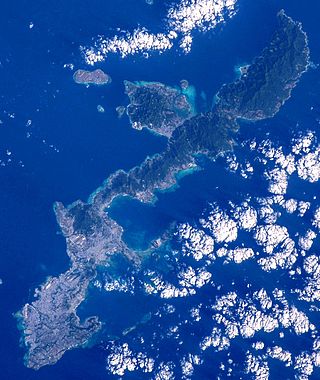
Okinawa Island, officially Okinawa Main Island, is the largest of the Okinawa Islands and the Ryukyu (Nansei) Islands of Japan in the Kyushu region. It is the smallest and least populated of the five main islands of Japan. The island is approximately 106 kilometres (66 mi) long, an average 11 kilometres (7 mi) wide, and has an area of 1,206.98 square kilometers (466.02 sq mi). It is roughly 640 kilometres south of the main island of Kyushu and the rest of Japan. It is 500 km northeast of Taiwan. The total population of Okinawa Island is 1,384,762. The greater Naha area has roughly 800,000 residents, while the city itself has about 320,000 people. Naha is the seat of Okinawa Prefecture on the southwestern part of Okinawa Island. Okinawa has a humid subtropical climate.

The University of the Ryukyus, abbreviated to Ryūdai (琉大), is a Japanese national university in Nishihara, Okinawa, Japan. Established in 1950, it is the westernmost national university of Japan and the largest public university in Okinawa Prefecture. Located in the Senbaru neighborhood of the town of Nishihara, its campus borders both the village of Nakagusuku and the city of Ginowan.
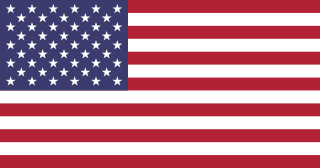
The United States Civil Administration of the Ryukyu Islands abbr. USCAR was the civil administration government in the Ryukyu Islands, Japan, replacing the United States Military Government of the Ryukyu Islands in 1950, and functioned until the islands were returned to Japan in 1972. It oversaw the native Ryukyuan Government, and could overrule all the decisions made by the native government.

The Ryukyu independence movement or the Republic of the Ryukyus is a political movement advocating for the independence of the Ryukyu Islands from Japan.

The Ryukyu Islands, also known as the Nansei Islands or the Ryukyu Arc, are a chain of Japanese islands that stretch southwest from Kyushu to Taiwan: the Ōsumi, Tokara, Amami, Okinawa, and Sakishima Islands, with Yonaguni the westernmost. The larger are mostly volcanic islands and the smaller mostly coral. The largest is Okinawa Island.
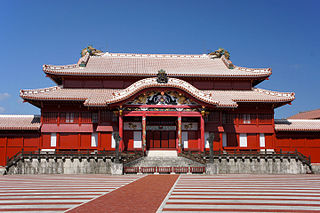
The Government of the Ryukyu Islands was the self-government of native Okinawans during the American occupation of Okinawa. It was created by proclamation of the United States Civil Administration of the Ryukyu Islands (USCAR) on April 1, 1952, and was abolished on May 14, 1972, when Okinawa was returned to Japan, in accordance with the 1971 Okinawa Reversion Agreement. The government was headed by a Chief Executive, and had an elected legislature. It often had conflicts with USCAR, who could overrule all of their decisions. The Ryukyuan government was the driving force behind the movement for Okinawa to return to Japanese administration.

The invasion of Ryukyu by forces of the Japanese feudal domain of Satsuma took place from March to May of 1609, and marked the beginning of the Ryukyu Kingdom's status as a vassal state under the Satsuma domain. The invasion force was met with stiff resistance from the Ryukyuan military on all but one island during the campaign. Ryukyu would remain a vassal state under Satsuma, alongside its already long-established tributary relationship with China, until it was formally annexed by Japan in 1879 as the Okinawa Prefecture.
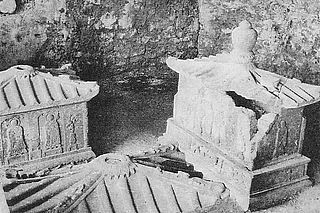
Eiso was a semi-legendary ruler of Okinawa Island. He was the founding monarch of the Eiso dynasty.
Tomi Taira was a Japanese actress with a long history of performing in Okinawan theatre. She was mainly active as an actress, narrator, dialect coach and in other capacities in shows and films taking place in Okinawa and in projects otherwise representing the region, as well as working more directly and officially with the Okinawa Tourist Bureau in promoting the island prefecture.
Shō Taikyū was a king of the Ryukyu Kingdom, the sixth ruler of the first Shō dynasty. His reign saw the construction of many Buddhist temples, the casting of the "Bridge of Nations" Bell, and the battle between the lords Gosamaru and Amawari.
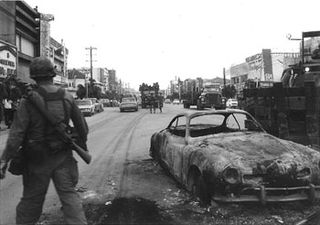
The Koza riot was a violent and spontaneous protest against the US military presence in Okinawa, which occurred on the night of December 20, 1970, into the morning of the following day. Roughly 5,000 Okinawans clashed with roughly 700 American MPs in an event which has been regarded as symbolic of Okinawan anger against 25 years of US military administration. In the riot, approximately 60 Americans and 27 Okinawans were injured, 80 cars were burned, and several buildings on Kadena Air Base were destroyed or heavily damaged.

The Ryukyu Domain was a short-lived domain of the Empire of Japan, lasting from 1872 to 1879, before becoming the current Okinawa Prefecture and other islands at the Pacific edge of the East China Sea.

The United States Military Government of the Ryukyu Islands abbr. USMGR, also referred to as U.S. Ryukyu Islands, was the government in the Ryukyu Islands, Japan from 1945 to 1950, whereupon it was replaced by the United States Civil Administration of the Ryukyu Islands (USCAR).

Kiyuna Tsugumasa was a politician of Ryukyuan descent who was active in Taiwan and Okinawa. He spent all his life seeking an independent Ryukyu; if could not reach that goal, he preferred to return to the Republic of China rather than Japan. He was also known by his Chinese style name, Tsai Chang.
Ie Ueekata Chōboku also known by Ie Ueekata Chōkei and his Chinese style name Shō Tenteki, was a bureaucrat of the Ryukyu Kingdom. He served as a member of sanshikan from 1782 to 1801.

The Ryukyu Disposition, also called the Ryukyu Annexation or the annexation of Okinawa, was the political process during the early years of the Meiji period that saw the incorporation of the former Ryukyu Kingdom into the Empire of Japan as Okinawa Prefecture and its decoupling from the Chinese tributary system. These processes began with the creation of Ryukyu Domain in 1872 and culminated in the kingdom's annexation and final dissolution in 1879; immediate diplomatic fallout and consequent negotiations with Qing China, brokered by Ulysses S. Grant, effectively came to an end late the following year. The term is also sometimes used more narrowly in relation to the events and changes of 1879 alone. The Ryūkyū Disposition has been "alternatively characterized as aggression, annexation, national unification, or internal reform".

Okinawa (沖縄) is a name with multiple referents. The endonym refers to Okinawa Island in southwestern Japan. Today it can cover some surrounding islands and, more importantly, can refer to Okinawa Prefecture, a much larger administrative division of Japan, although the people from the Miyako and Yaeyama Islands still feel a strong sense of otherness to Okinawa.
Yasuo Higa was an Okinawan photographer, ethnologist and anthropologist. He served ten years as a police officer near a US military base before becoming a photographer, with much of his early work centered on life in postwar Okinawa. Higa is most known for his research on ancient rituals and shamanesses from the Ryukyu Islands, mainland Japan, and Asia, conducted over the span of nearly 40 years. Through his photographs and extensive notes, Higa has preserved critical documentation on maternal rituals that have been effectively rendered extinct in areas such as Kudaka and Miyakojima.














